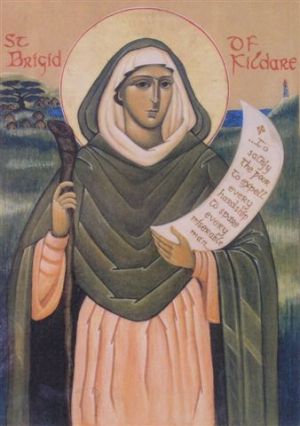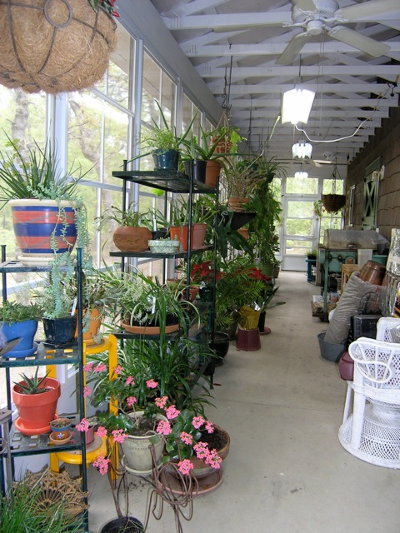The summer brings us so many wonderful feasts beginning with Saints Peter and Paul, the Holy Apostles, the Dormition of the Righteous Anna, Procession of the Cross and, of course, the Transfiguration of the Lord and the Dormition of the Theotokos as well as so many holy men and women to remind us of our good God’s love for each one of us.
Nature does its heat and storms; fruit and vegetables bloom and grow (or don’t). The birds, squirrels, rabbits, deer, etc., increase and multiply. If we have eyes to see, God is always with us telling us of His Love and showing us how to live.
No matter how it appears, our good God cares for us as He does the birds of the air and the lilies of the field. Our work is to trust Him and to help each other as best we can. It’s the present moment and how we respond to it that matters – the smile, the tears, the encouragement of ourselves and/or our neighbor – whomever God has placed before us. It is recognizing Him and His will in the moment that is important, giving Him the praise, honor and thanksgiving that are His due.
If you will look at the drawings below, you will see the floor plans to our monastery building. The building will face north with the chapel facing east. We know that this is an ambitious plan and will have to build it in phases. There is a long porch both upstairs and down stairs with pillars (the little squares). The double door that leads from the porch into a large room is the narthex, dining room and sitting room combined. There are three double doors to the chapel so that they can be open for an overflow crowd. On the southeast corner, the room to the south of the chapel will be space for the sacristy, storage for music, a small work area, bathrooms, and, a washer/dryer room. A sun porch is to the south of this room. To the south of the living/dining room is the kitchen and pantry with an open porch and ramp. To the west of the living/dining room is an office, a butler’s pantry, the elevator and stairwell. Upstairs, there is a large meeting room and seven bedrooms (cells), a laundry room, office and a storage room for the monastics. The remaining section with twelve cells, an icon/art room, a prosphora kitchen, and storage space is the part that will be built later, but has to be planed for now.
We have met with our architect and contractor several times and worked out numerous details. Often we had to adjust our ideas and desires to coincide with Aiken County Planning and Development regulations. Being a two story building, the placement of the elevator and the stairwells were of major consideration. Meeting handicap regulations presented us with additional changes. Adding an eight-foot wide ramp up to the front, double door to facilitate bringing caskets into the chapel was an addition needed for funerals. Determining the placement of the ramp, porch, and stairwell in the back also proved challenging. Living in the South, we decided that the walls needed to be twelve feet tall to disseminate the heat and provide amble room for ceiling fans and light fixtures. This also gives the chapel a high ceiling. It extends upwards through both floors.
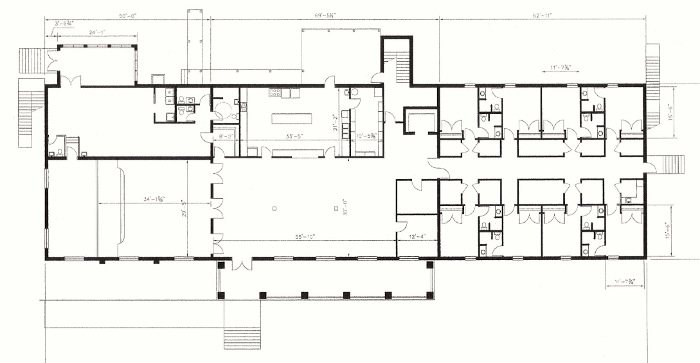
FIRST FLOOR PLAN - North Side
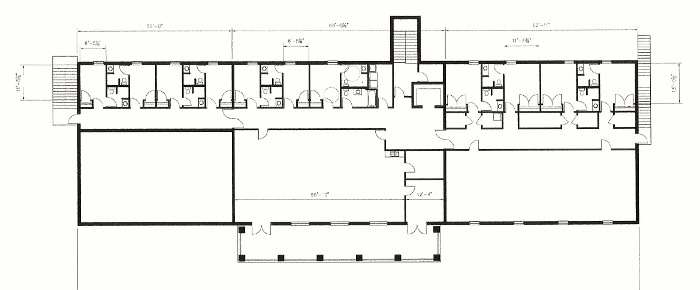
SECOND FLOOR PLAN - North Side
Thanks to e-mail, we have been able to ask and answer numerous questions, i.e., wall and floor finishes in different rooms. The toughest of these questions was the flooring of the upstairs porch -- metal base, no wood, and a non-skid tile. It’s still up for more discussion. As all of you who have been involved in a building project know there are scores of decisions to make.
A few weeks ago, the architect sent the plans to the HVAC and plumbing engineers. It is our firm hope that soon our contractor will have all the drawings with seals thereupon to take to Aiken Planning and Development to apply for and obtain a Building Permit.
After waiting until we had several days of good rain, the man who cleared the land returned to burn down the brush. It was wonderful to see someone take extra special care to build a sand barrier around the brush to contain the fire, thus protecting the trees. We will have the rest of the land cleared once we have a building permit. Everything will happen in God’s time and as God wills.
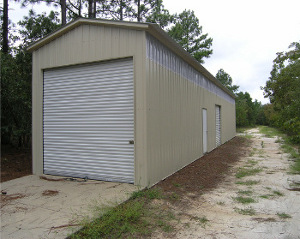
Shortly after the Spring newsletter was mailed out, St. Walburga Warehouse was finally finished. It has given us a place to store items for the monastery building, a place to park our 1987 Ford Pick-up, and a place to shelter a tractor. Paying for the warehouse, postponed our purchasing a tractor for a few years. The warehouse is 12’ wide, 70’ long and 12’ tall, with two 20’ ramps (one at each end). It has three roll doors, one at each end and one in the middle as well as a man door. We may add a roof over the ramps at a later date.
Twice a year Flea Market trips to sell items to raise money for the building fund have been our norm for the last sixteen years. We were at the Barnyard Flea Market on the last Saturday in May and raised $253.50. Our second trip for this year is scheduled for September 15th. The amount we raise is not much in the scheme of things, but it all adds up.
We know that we have to continually work toward our goal, give it all we have, and remain faithful to our monastic vocation. So many of you are supporting us in various ways. For this and more we are most grateful as we know that we cannot accomplish this goal without your help, and most importantly, God’s blessing.
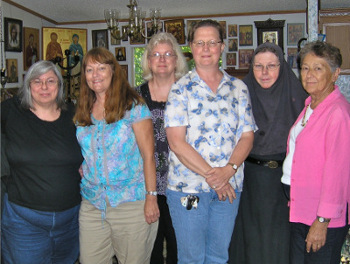
On June 16th, five of the members of St. Sophia of Thrace Sisterhood from St. Mary Magdelene Orthodox Church in Rincon, Georgia, came here for a retreat day. Their matronal feastday is the same as ours, June 4th.
During the third week of July, Mother Thecla attended the Diocesan Assembly in Miami. Florida, while Mother Helena and Mother Lyubov hosted four girls and their chwhitney houston all the man that i needaperone from the Exaltation of the Holy Cross Orthodox Mission, High Point North Carolina.
Please know that these are only some of the highlights in our monastic life. The three of us pray and work hard. One thing that we fervently pray for is for God to send women who are called to be nuns here.
Under the Turkish Muslim Yoke, many Orthodox Christian nations suffered horrendous persecution during the 15th through the 20th centuries. Millions of Orthodox Christians were tortured and martyred, valiantly refusing to renounce Christ and become Muslims for worldly gain. In Church history, however, there is another period of Muslim tyranny which is shorter in time span and lesser known. This period began in 711 when the Muslim Saracens invaded Southern Spain from North Africa. The cosmic unleashing of these incursions sent the entire country whirling. Christian kingdoms survived in the north and, particularly, the northeast; however, Christians in the other regions of Spain lived under the domination of the Muslims, who eventually seized as their capital the beautiful city of Córdoba in the south. The Spanish Christians were derogatorily called “Mozarabs” from the Arabic musta‛rib, or “would-be” Arabs. The struggle to preserve their Orthodox Christian roots would give birth to the very rich “Mozarabic” culture, as well as to powerful confessors and martyrs catalogued under the Fifth Age of Spanish History, that of the Reconquest.
From 711 AD to approximately 850 AD, the Muslims and Christians tolerated one another and life, although difficult, was manageable. Not surprisingly, over time the Orthodox Christians fell into a very “cozy” relationship with their Muslim rulers. They grew lax and apathetic, partly due to simply having to deal with daily life and its challenges in the face of excessive taxation and lack of employment for non-Muslims, but also due to frequent contact with the “adversary”, fraternization with the enemy, so to speak. Even Bishop Recafred had become too friendly with the Muslim authorities, which frequently inclined him to support the Muslims instead of his own flock so as to maintain the comfortable lifestyle of luxury and privilege to which he had become accustomed.
To be a Christian in ninth century Córdoba was not easy, especially since the laws catered to the Muslims. By 850, the law stated that the conversion of a follower of Islam was punishable by death. Additionally, by law Christians were “allowed” to practice their religion, but they paid dearly for this privilege. They were obliged to pay a burdensome tax which caused many to apostatize, understandably seeking advantages, security and worldly prosperity for their families. Unfortunately, the youth raised in this environment increasingly preferred and, in many cases, adopted Muslim culture, language and religion, abandoning their own Christian heritage. As a result, a healthy rebellion began to incubate, nurtured under the heat of Muslim domination and the diseased symptoms of a lukewarm Christianity.
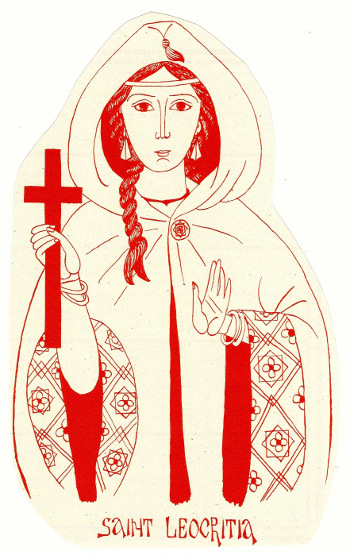
Denise B. Norman
Iconographer
By 851, during the reign of Abderrahman II, Emir of Córdoba, enthusiastic Christians began to openly proclaim the Christian faith.1 According to Muslim accounts, it is recorded that in 851 a Mozarab rebellion occurred. What primarily concerned the Islamic authorities was what they perceived as “willful disobedience”. The incidence of “fanatical” Christians, who were labeled “blasphemers” by the Muslims, prompted the authorities to consider drastic measures to forestall further denunciations of Islam. Although the Emir issued an edict threatening all blasphemers of Islam with execution, it proved to have little effect, and more and more Christians began to publicly denounce Islam while proclaiming the Christian faith. In response, the Muslim yoke tightened and the Cordoban Christians in particular felt its impact. From 851 to 859, southern Spain would witness not only horrible persecutions of Spanish Christians at the hands of the Muslims, but also inspiring testimonies of unswerving Christian faith.
The city of Córdoba confirmed Tertullian’s statement that, “the blood of the martyrs is the seed of the Church”. From the muffled cries of despairing Christians, God would raise up saints, saints of great stature. In particular, God called upon St. Eulogio (Feastday March 11th), a priest, confessor and great zealot of the Christian faith, and a descendant of one of the principal families of Córdoba. Father Eulogio was chosen by God to record these ninth century persecutions for posterity in his Memoriale sanctorum, as well as to compose many moving exhortations to the faithful. He exerted monumental efforts to teach the faith, to gain converts from Islam in direct contradiction to the laws that strictly forbad proselytizing, and to regain to the flock those Christians who had apostatized due to the trickery or threats of the Muslims. Father Eulogio’s courage is remarkable, especially when viewed from the legal standpoint of Muslim Spain, and it is obvious that he skirted death on a daily basis.
It was considered by the Muslim authorities that the numerous monasteries in and around Córdoba were the seedbeds of revolt in that priests, monks and nuns were some of the greatest “blasphemers” of Islam. As a result, in June, 851, the Emir ordered the arrest and detention of all clerical leadership in the local community, among whom was Father Eulogio. In fact, it was during this imprisonment that he finished the first volume of Memoriale sanctorum, as well as Documentum martyriale, which was written to encourage those facing martyrdom. Additionally, at this time Father Eulogio wrote an exhortation to two virgins who were also being held in the prison, St. Flora and St. María (F. November 24th), who were soon to be martyred. The work is famous and is very applicable to St. Leocritia: “They threaten to sell you as slaves and to dishonor you, but know that whatever infamy they may inflict upon you, they cannot defile the virginal purity of your soul. Cowardly Christians will tell you in order to shake your constancy that the churches are silent, deserted and deprived of the sacrifice on account of your obstinacy, that if you will but yield temporarily, you will regain the free exercise of your religion. But be persuaded that, for you, the sacrifice most pleasing to God is contrition of heart, and that you can no longer draw back or renounce the truth you have confessed.” After four months, the clerics were released and were “forced” to convene a council in an attempt to discourage more denunciations of Islam. This, too, proved unsuccessful.
It was into this stifling environment, laced with the poisonous threats of persecution and certain martyrdom, that St. Leocritia was born. Her parents were both Muslims, and the family was extremely wealthy and very influential. Once their daughter was of age, her parents naturally intended to give her in marriage to a Muslim of equal rank. However, a relative named “Litiosa”, who had secretly become a Christian, influenced the young maiden, altering the course of her life completely. Leocritia innocently visited Litiosa on many occasions, and her parents were unaware that anything other than a mere social gathering was taking place. Without her parents’ knowledge or permission, Leocritia soon converted to Christianity and was baptized. She also made a vow of virginity, giving all for Christ. In fact, Leocritia, Litiosa and Anulo, the sister of Father Eulogio, were known publicly as “virgins dedicated to God”. As if already sensing her destiny, Leocritia knew she could count on them in case of difficulties at home. Certainly, the Christian community was quite vigorous, even if hidden and oppressed, and Leocritia benefited not only from her spiritual sisters, but from exposure to the numerous Cordoban Christians, many of whom knew the martyrs personally. These were the Christians Christ Himself would laud and for whom crowns had already been prepared in the Kingdom of Heaven.
At first, Leocritia kept her conversion a secret, but in time, she began to fear the spiritual consequences of keeping her faith hidden and not practicing it in the light of the day and in the presence of others. She began to practice her religion more openly and eventually disclosed her conversion to her parents. They were extremely angry, especially when they discovered that a relative had been the catalyst of her conversion. They did everything they could to persuade their daughter to apostatize. After all, renunciation of Islam to become Christian was a crime punishable by death. They pleaded with her, they threatened her, they intimidated her, they even threatened to have Litiosa killed if she did not return to the Islamic faith, but all to no avail. Finally, they beat her and imprisoned her in her own home. This was not considered parental abuse, but was condoned by the laws. In the eyes of the Muslims, Leocritia was not in her right mind.
The tension between love for her family and love for God must have been hard for Leocritia to endure. After all, she was a recent convert and it would have been easy to return to her former life in order to keep familial peace and to save herself from death. However, it was the vow of virginity, the truth that Leocritia had been consecrated (or set aside) as something special to God, that had deeply penetrated her heart. It was this which allowed her to understand with both mind and heart that she owed allegiance only to God. She must have been comforted by calling to mind what she had learned in preparation for her vow of virginity. She may have studied Exodus 28 where Aaron was given the garments of the priesthood. He was consecrated to God, just as she had been. In verse 36, he was given a turban with the words “Holy to the Lord” engraved upon it. This was what Leocritia now was – HOLY TO THE LORD – only in her case, these words had been engraved on her heart. Jesus Christ’s teachings that, “Anyone who loves father or mother more than Me is not worthy of Me” and “He who finds his life will lose it, and he who loses his life for My sake will find it” (Matthew 10:37,39) were now for her, personally and specifically. They were her strength and courage, her refuge and confirmation. There was no turning back.
Leocritia knew she had to escape from her home, but the prevailing atmosphere in the city now under Mohamet I, the son of the former ruler, was one of suspicion and terror. Mohamet I had a totalitarian flair, and his ascent to the position of Emir was accompanied by an escalation of persecutions. No one knew who they could trust. Fear of betrayal and denunciation before the Emir’s judges and council were constant concerns. Leocritia somehow sent word to Father Eulogio and Anulo, both of whom encouraged her to leave home. Supported by the community’s prayers, Leocritia now waited for a chance to escape. In order to gain her parents’ confidence, she became more submissive – so much so that her parents thought she was beginning to reconsider and might change her mind. The wedding of a friend became Leocritia’s escape route. Due to her change in demeanor, her parents decided to allow her to attend the wedding with them. Once she was out of sight of her parents, she fled to meet Father Eulogio and Anulo.
When Leocritia’s parents discovered that she had run away, they applied great pressure upon the Orthodox community in order to ascertain her whereabouts. They made certain that any Christian suspected of having aided Leocritia in her escape or having any communication with her whatsoever was to be arrested and interrogated. Their actions were not unusual and were according to the law. It was well known that Christians were forbidden, on pain of death, to make converts. In spite of her parents’ actions, the Muslims’ search efforts were made more difficult because Father Eulogio had arranged for Leocritia to keep moving around within the Orthodox community, careful never to remain in any one place for too long a time.
In spite of the prevalent dangers, Father Eulogio continued to instruct Leocritia in the faith. Since it was law that a Muslim who professed the religion of Christ would be killed, everyone knew the fate that awaited Leocritia. The zealous priest, always conscientious and sincere, exerted every possible effort to clarify Christ’s teachings so as to strengthen Leocritia for the trial ahead. Unfortunately, after one of these sessions, her appointed escort never arrived, the escort who was to conduct her to the latest hiding place. A betrayal, with shades of the atrocious duplicity of Judas Iscariot, led the authorities to the house where Father Eulogio and Leocritia had been studying. They were both arrested, she for apostasy and he for proselytizing, and they were swiftly brought before the Muslim judge and a council.
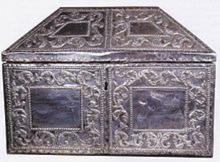
Reliquary Containing the Relics
of Saints Eulogio & Leocritia
at Oviedo Cathedral in Oviedo, Spain
Picture from http://en.wikipedia.org
/wiki/Eulogius_of_CordobaWhen Father Eulogio was questioned as to why he concealed the wealthy girl, he replied that he had been entrusted with the office of preacher and further, that it was his holy duty to enlighten all who sought the light of the Christian faith. “To no seeker may I refuse to show the way of life. What I have done for her, I would also have done for you, if you had asked me,” he concluded. He then began to preach the Gospel, but the judge and the council, to avoid listening to his words of Life, sentenced him to death. Father Eulogio and Leocritia were flogged and condemned to death; however, they were both given a period of time within which to reconsider and weigh their options – whether they might renounce Christ and embrace Islam. In spite of this Muslim delay tactic implemented with the hope that languishing in the dark dungeon without food or drink might hasten a return to Islam, neither one renounced the Christian faith.
On March 11, 859, St. Eulogio was beheaded, and four days later, St. Leocritia. The body of the young maiden was thrown into the Guadalquivir River, the depository of countless Christian bodies during the ninth century. Her relics were retrieved by the faithful and brought to Oviedo around 884, where they took their place beside those of St. Eulogio. From March 11th onward, it seemed that the acts of the martyrs had been prematurely silenced. However, Pablo Alvaro, a layman and close friend of St. Eulogio, took up where the beloved priest had stopped. It is due to his efforts that the story of St. Leocritia has been preserved and the fabulous Life of St. Eulogio was written.8






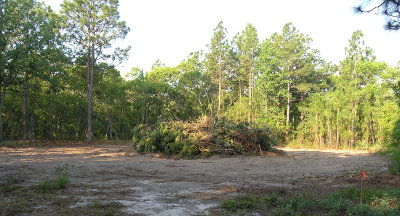
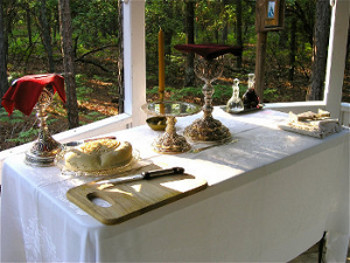
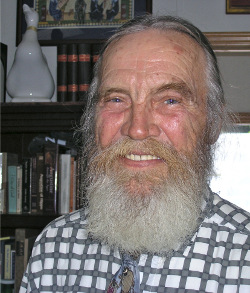
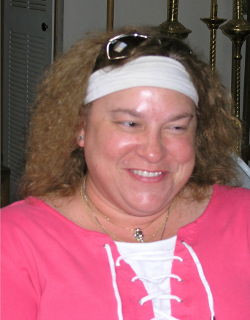
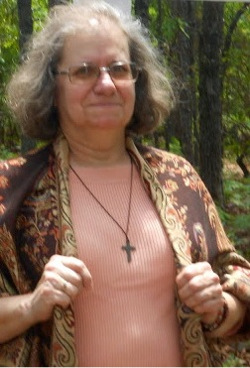
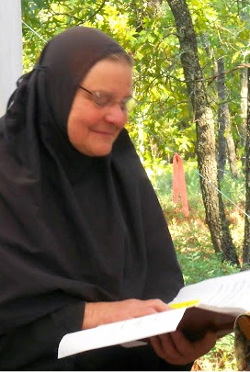
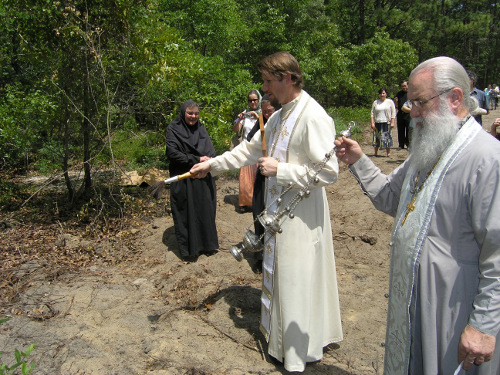
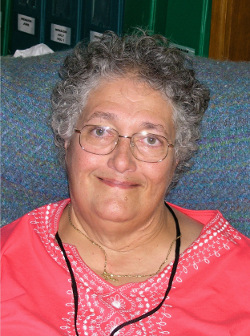
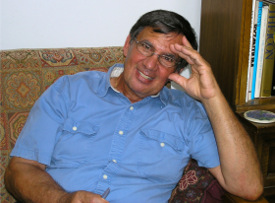
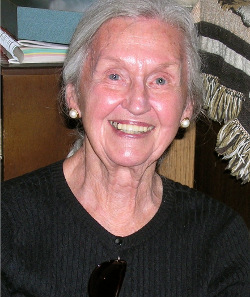
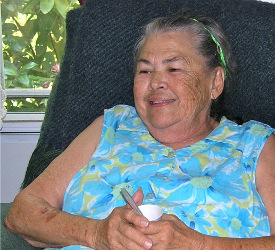
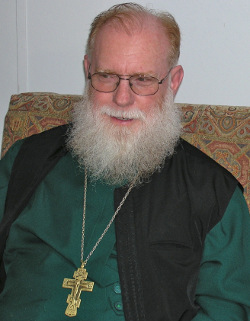
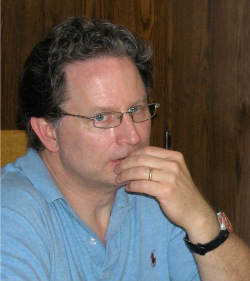
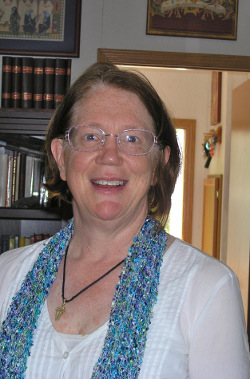
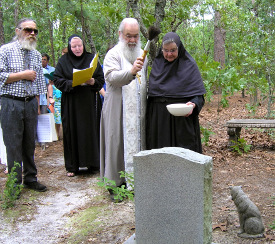
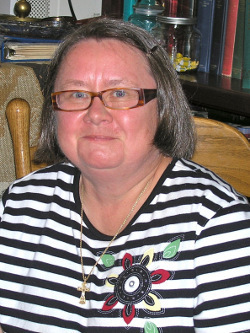
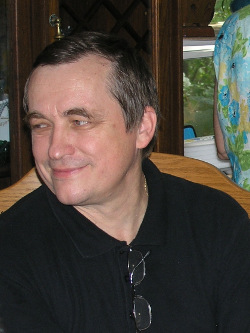
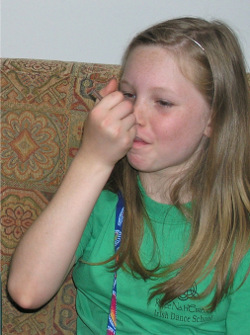
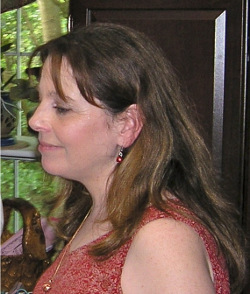

 FIRST FLOOR PLAN - North Side
FIRST FLOOR PLAN - North Side SECOND FLOOR PLAN - North Side
SECOND FLOOR PLAN - North Side
























